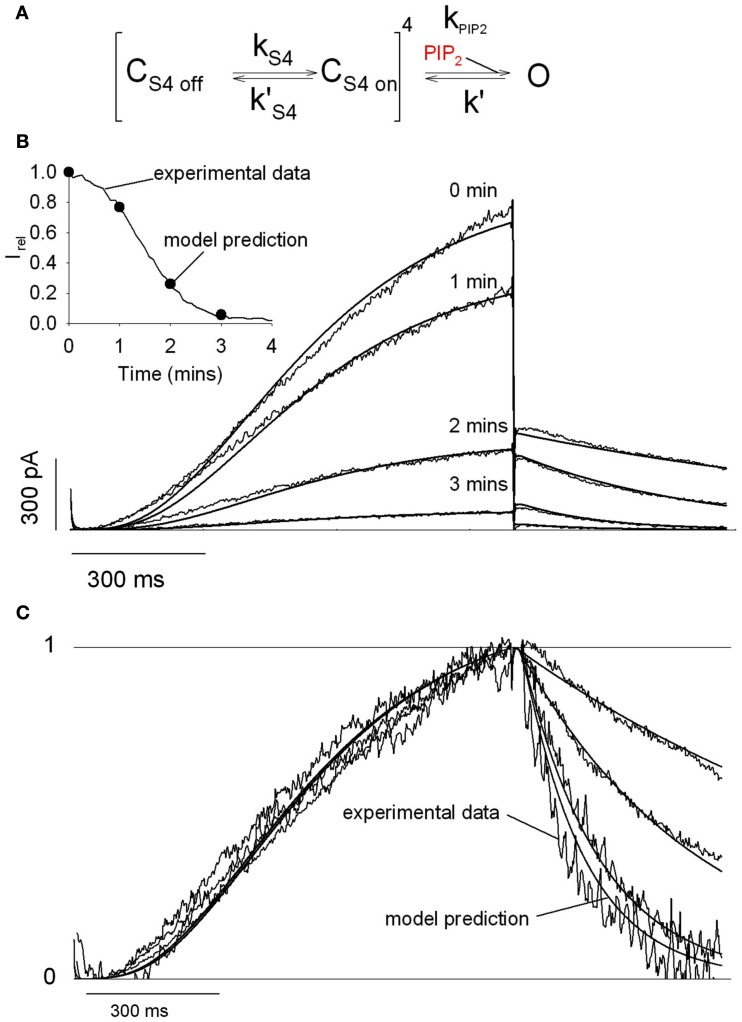Figure 2.
A model based on the stabilization of the open state by PIP2 recapitulates the characteristics of the KCNQ1/KCNE1 currents. (A) During activation, is negligible whereas kS4 = 3.56/s, and during deactivation whereas kS4 is negligible. In this model, PIP2 only affects the transition from a closed state to an open state when the four voltage sensors are in the permissive state (CS4 on). Thus, during simulated rundown, only kPIP2 varies (k′ = 87.3/s). (B) Experimental traces were superimposed with the simulated current (solid lines). kPIP2 was fixed to 592.74, 176.43, 25.84, and 4.53/s (simulating PIP2 level decrease) to best fit the decrease in current amplitude during rundown, as shown in the inset. Inset: simulated (circles) and observed current (solid line) amplitudes as a function of time after patch excision. (C) Traces in (B) were normalized to compare the observed and simulated kinetics of activation and deactivation. From Loussouarn et al. (2003).

